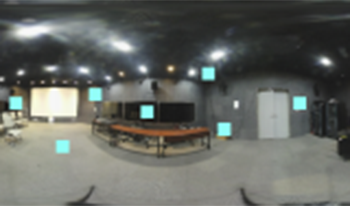
360-degree Image quality assessment (IQA) is facing the major challenge of lack of ground-truth databases. This problem is accentuated for deep learning based approaches where the performances are as good as the available data. In this context, only two databases are used to train and validate deep learning-based IQA models. To compensate this lack, a dataaugmentation technique is investigated in this paper. We use visual scan-path to increase the learning examples from existing training data. Multiple scan-paths are predicted to account for the diversity of human observers. These scan-paths are then used to select viewports from the spherical representation. The results of the data-augmentation training scheme showed an improvement over not using it. We also try to answer the question of using the MOS obtained for the 360-degree image as the quality anchor for the whole set of extracted viewports in comparison to 2D blind quality metrics. The comparison showed the superiority of using the MOS when adopting a patch-based learning.
Abderrezzaq Sendjasni, Mohamed-Chaker Larabi, Faouzi Alaya Cheikh, "Visual Scan-Path based Data-Augmentation for CNN-based 360-degree Image Quality Assessment" in Proc. IS&T London Imaging Meeting 2021: Imaging for Deep Learning, 2021, pp 21 - 26, https://doi.org/10.2352/issn.2694-118X.2021.LIM-21
